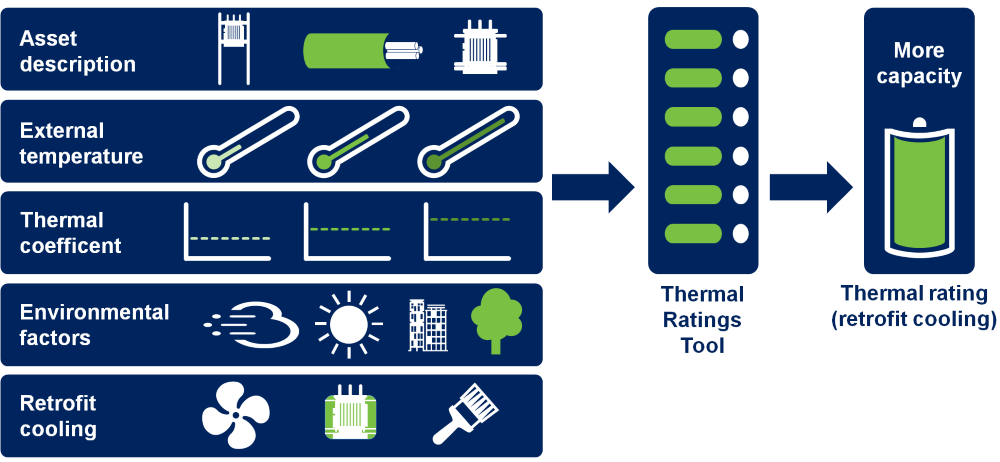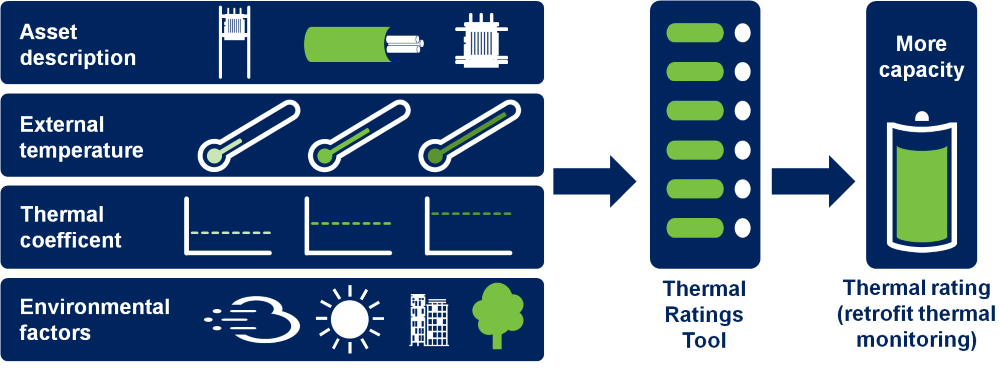Celsius trials
Celsius trials
Stage one – Thermal monitoring
The first stage of the project was to record temperature and load measurements from 520 distribution substations (51 pole-mounted and 469 ground-mounted) to evaluate the available capacity margins at each site. As part of this work we delivered a functional specification for a low cost monitoring solution which can be deployed at scale.
To evaluate the capacity margins, we need to measure the maximum operating temperature (or hot spot) which is at the core of the asset. As it's impractical and cost prohibitive to measure this at scale using retrofit means, we have developed a methodology to calculate the internal hot spot temperature from the measured external temperature and other known information.
The output of this work is a ‘Thermal Ratings Tool’, which needs minimal inputs such as temperature and environment to quantify available capacity. This tool is a Microsoft Excel look-up table which is easily transferable and is now available to other network operators across the country.
To ensure Celsius can be applied to the majority of distribution substations in Great Britain, we selected a representative sample from across our asset base. This incorporates enough examples of each main substation type and environment so that we can understand how each one behaves.
Our site selection included the following factors:
- Substation type, asset type (age, manufacturer etc) and surrounding environment
- Load
- Types of load, for example commercial/domestic/industrial, urban/dense urban/rural, presence of certain technology (LCT clusters, including heat pumps, other innovation projects)
- Practical considerations.
Stage two – Retrofit cooling techniques
To release further capacity, we evaluated and deployed a number of retrofit cooling technologies for cables and transformers at 100 of the 520 original trial sites.
This identified and evaluated a range of potential technologies which we can use to cool or thermally manage assets. For example, passive techniques such as painting transformers with reflective paint, new backfill material for cables; and active techniques such as fans on transformers.
In collaboration with other network operators, we selected a number of technologies to be trialled.
Once the cooling technologies are installed, we monitored the benefits for a period of 12 months.
The learning from this work was captured as an enhancement to the Thermal Ratings Tool. The tool automatically evaluates the potential gain in capacity of each technique for different applications and environments.
The cooling technologies were deployed at substations close to where our customers live and work, so we carried out a programme of customer engagement to understand if our customers found the proposed cooling solutions acceptable compared to traditional solutions.

Cooling technology installation

Ekkosense cooling technology installation

Passcomm cooling technology installation
Celsius trial data
The data is available below.
